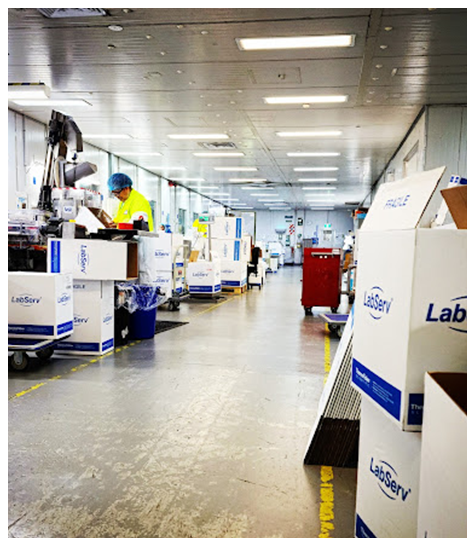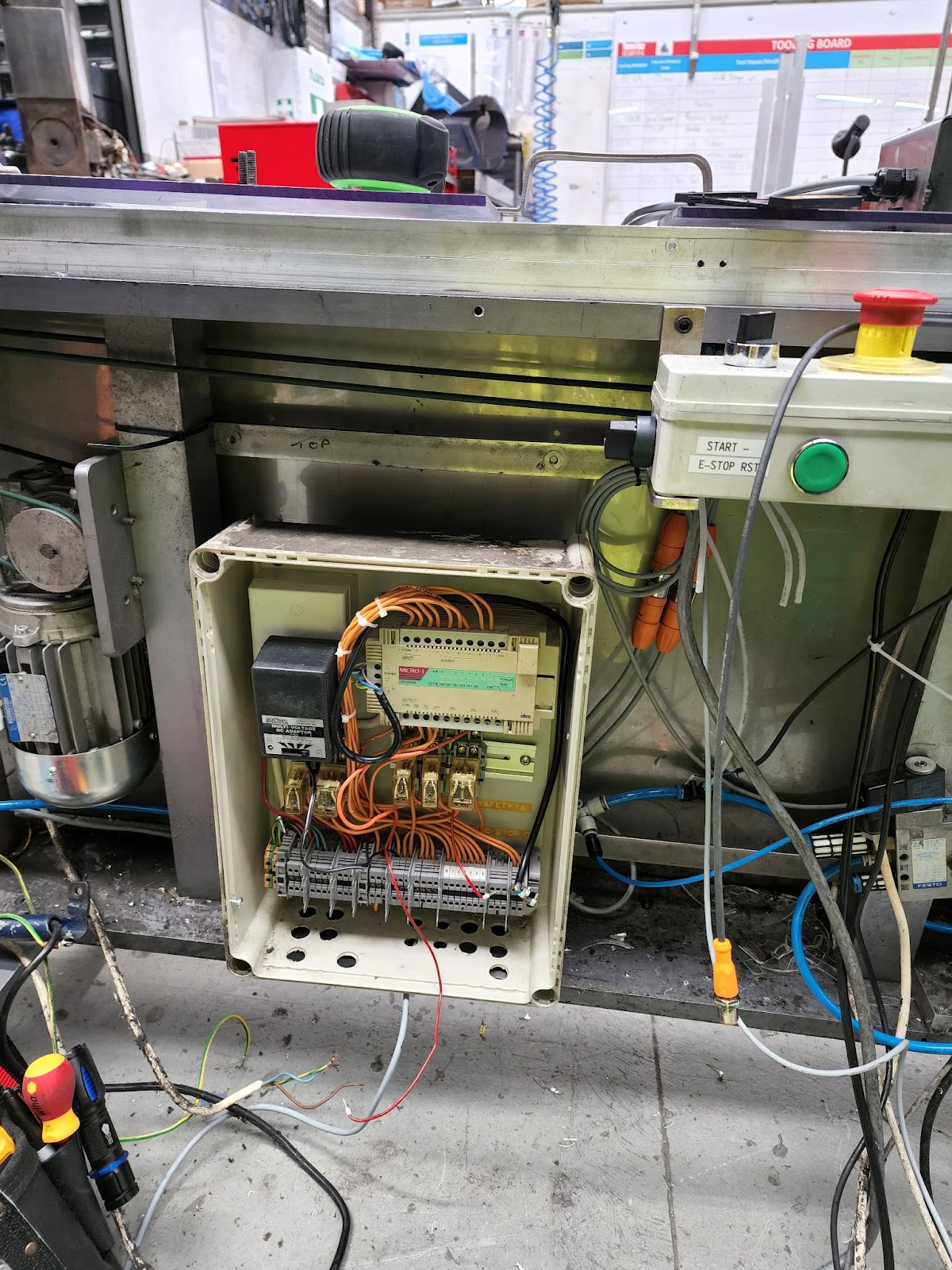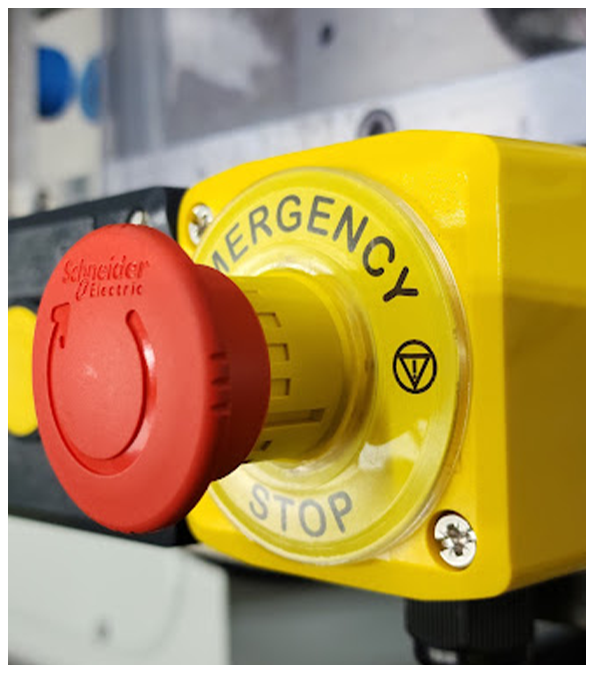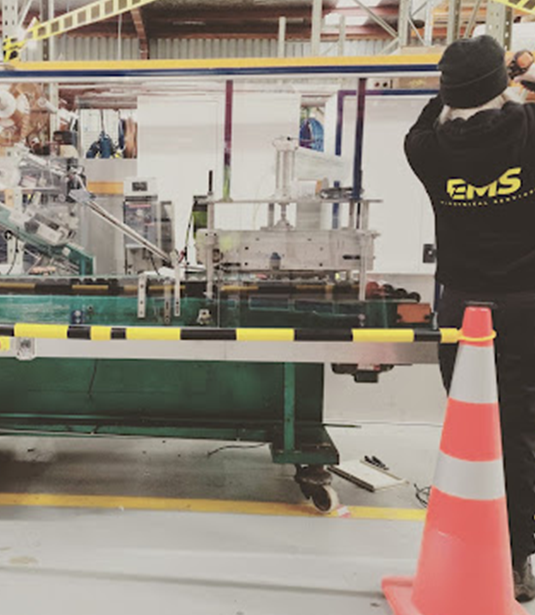Thermo Fisher Scientific is a leader in manufacturing laboratory and Medical products.
The Thermo Fisher Scientific manufacturing facility in East Tamaki, Auckland is responsible for producing “lab plasticware and supplies”, as well as “sample storage and management”.
The facility is made up of plastic injection moulding machines, assembling and packaging machinery, labelling and capping machinery, raw materials storage as well as market ready product storage.
In order to remain competitive, Thermo Fisher Scientific decided they needed to upgrade a number of petri dish packaging machines on their manufacturing lines.
The petri dish packaging machines are located in the packaging department and reduce employee headcount by automating repetitive tasks.
How do the machines work? And what do they do?
The dishes come direct from a plastic injection moulding machine via a conveyor, the packaging machine performs a number of operations from this point on, one of them is an operation to identify dishes that have been stacked incorrectly. Petri dishes are two piece items, made up of a top and bottom. If the dishes are flipped, or stacked incorrectly the machine will detect this using built in sensors. After this operation, the dish moves to the stacking zone of the machine where a pneumatic cylinder pushes the dish into its respective packaging sleeve.


This is the failed control cabinet, midway through the change over process to our newly built control cabinet.
The problem that Thermo Fisher Scientific faced was the electrical control system of the machines were beginning to fail, like mechanical parts, electrical components also wear and fail.
The first machine to go down was related to a malfunctioning PLC (programmable logic controller) the PLC controls the whole machine using logic based programs, without it, the machine cannot operate. A technician needs to program the PLC to which essentially determines what the machine does, the program is the operation that the machine performs .
John Walters – the site operations manager, decided it was time to call EMS Electrical Services in after the maintenance department realised they did not possess the necessary skills to undertake an overhaul of the control system.

One challenge that we faced right off the bat was downloading the program from the PLC, the machine that had failed was out of the picture due to its PLC being inoperative, the next approach was to connect to another PLC on a similar machine, however the PLC’s were so old that this was not possible without reinstalling an outdated windows operating system, something like Windows 95.
We made the decision to analyse the other machines’ functions and operations, and then build a program of our own.
With all of our machine automation projects, we plan and analyse on site, then design and build our control panels back at our workshop. While one team member builds the control cabinet, another will work on building the program for the PLC, this often involves running simulations to reduce program errors.
As well as rewiring and replacing the control cabinet and programming the PLC we also replaced many sensors, switches, buttons, and pneumatic solenoids.
The packaging machine uses a mixture of electric motors, pneumatic cylinders and pneumatic index positioners to get the job done.
It is common practice when upgrading certain equipment on a machine to include other components that may cause failure in the future, reliability speaking, when you strengthen an area of a machine it can often weaken another.
Once the control cabinet was finalised it was time to return to site and get to work removing the old cabinet and replacing it with the new one. This involved wiring all the inputs and outputs, mains power, and any auxiliary equipment into the newly built cabinet.
With the control cabinet successfully installed and all equipment wired to the cabinet, it was time to run the machine and check for correct operation.
Running simulations built into the programming software reduces errors, however some errors can be overlooked and will be picked up by the technician who conducts the pre-commissioning tests, this is why we have a set process when building industrial machinery, these processes eliminate the possibility of sending a machine to production with built in errors.
Once the pre-commissioning tests were complete and the machine had passed, it was then time to run the machine in production, this of course was monitored live by our technicians as a final check and sign off.

To conclude this project, the packaging machine upgrade was a great success, production was returned to normal.
Thermo Fisher Scientific noticed immediate reliability improvements, with zero machine failures and with the success of the first machine, and at the request of the site operations manager, we moved on to performing the same upgrades to more of the packaging machines, before they had a chance to fail.
This is where our specialty comes in, with our processes we can leave the machine in production, which reduces downtime so there is no loss of earnings for the client, we then follow the same process as the first machine, by building the control cabinets off site.
This reduces the machine downtime by 80%. The remaining 20% downtime is the time it takes to remove and replace the control cabinet, test and commission the machine.
Thermo Fisher Scientific realised the skills EMS Electrical Services provided, so they put in a brand new order to have three machines fitted with our product rejection system that we developed to reduce product waste, reduce faulty products from being packaged and increase profits.

Our apprentice Jess presents the newly built control cabinet moments before successfully being commissioned.
You can watch a video of the product rejection system and the machine automation upgrade at Media.
Partner with the experts in emerging technology and automated equipment for your next project.
All Rights Reserved | Designed by